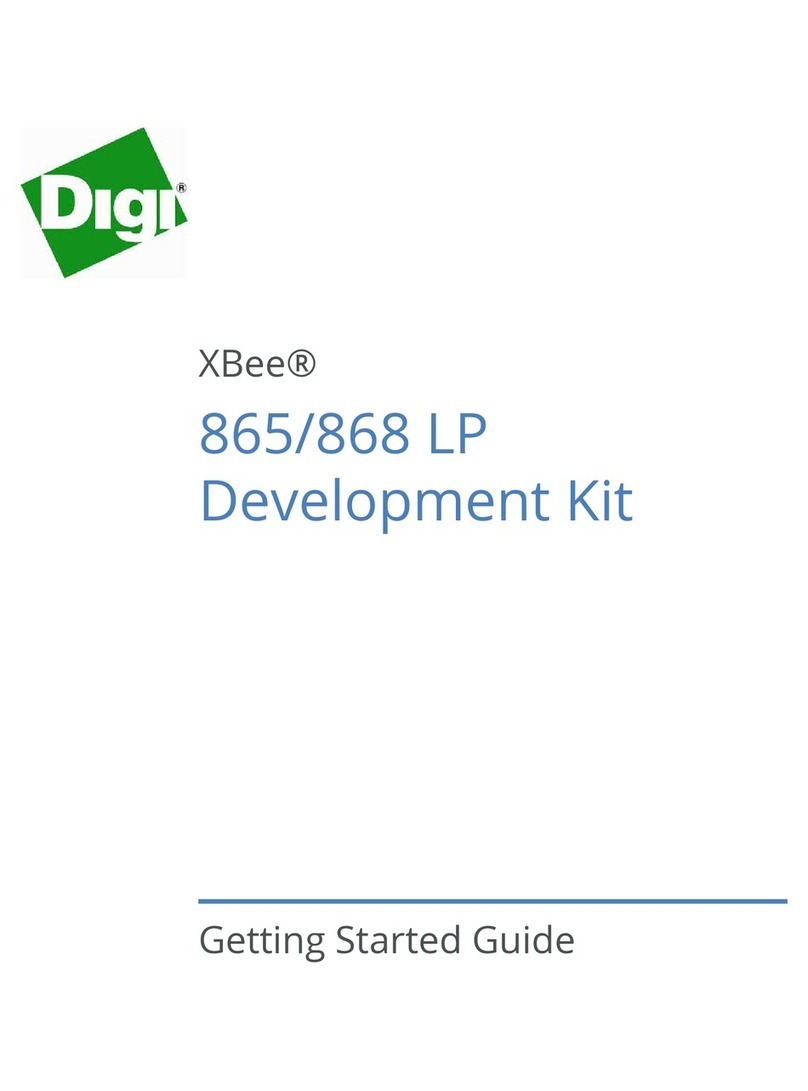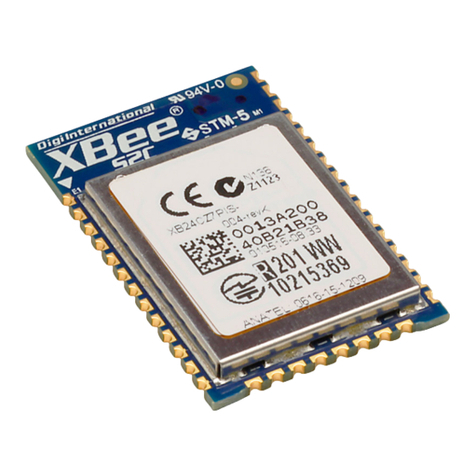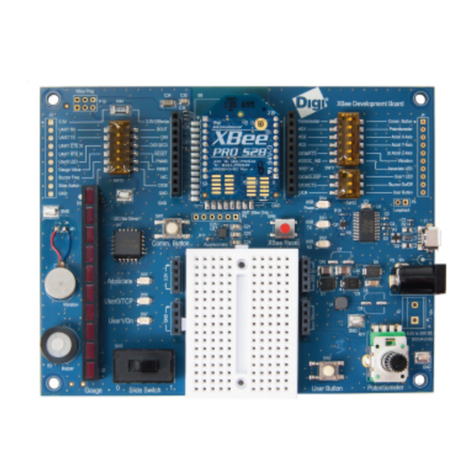
Design checklist Power supply
ConnectCore 8X Hardware Design Guidelines 7
☑ Item Description
2. Powering
the MCA
This power line is the input power supply of the on-module MCA. It must be
powered from a dedicated 3.3 V regulator connected to the main input power
supply of the board, since it is an always-on power supply. Connect a Schottky
diode (low forward voltage drop) between the output of the regulator and the
VCC_MCA pin. MCA_VIN_DET must be tied to the output of this 3.3 V regulator1.
To allow coin-cell (low-power mode) applications, the coin-cell/supercap must be
connected to VCC_MCA again through a Schottky diode. See Coin-cell/supercap
connected to VCC_MCA through Schottky diode.
Ensure there is no series resistance between the coin-cell/supercap and the
VCC_LICELL net in the circuit linked above. It introduces a voltage drop in the
transitory from normal operation to RTC mode operation which could cause
undesirable RTC behavior.
1Digi has validated that using a comparator instead of a direct connection
drastically improves the transitory time that the system takes to go from normal
operation to RTC mode. See Comparator used for connecting MCA_VIN_DET line
used on the ConnectCore 8M Nano DVK.
3. Output
power rails
The following power rails are outputs from the ConnectCore 8X SOM:
n3V3
n1V8
nLDO3
nLDO4
nVCC_SCU_1V8
These power rails (except VCC_SCU_1V8, which must only power the boot mode
and JTAG circuitry) are intended to power external circuitry on the carrier board.
Do not connect any external power supply to these lines.
4. Input
power rails
The following power rails are inputs to the ConnectCore 8X SOM:
nLDO3IN
nLDO4IN
nVDD_USDHC1
nVDD_MIPI_DSI_DIG
nVDD_ENET0
nVDD_ESAI_SPDIF
nVDD_SPI_SAI
nVDD_QSPI0B
nVDD_CSI
Digi recommends using the module output power rails to power these power
domains of the SOM.
































